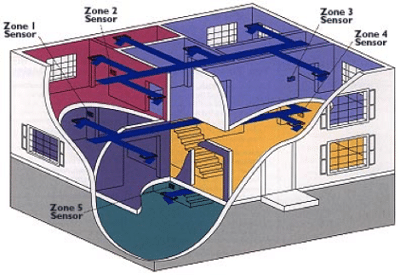Often in commercial buildings, especially office buildings, there can be a struggle to find a comfortable temperature for everyone inside. Some will feel like they are standing in a meat locker while others might compare their floor or office to an oven. This temperature disparity is often a sign that your commercial HVAC unit is not properly sized or properly zoned. Improperly sized HVAC units frequently have several major issues such as:
- Reduced comfort levels in your living or work space with some feeling too hot or too cold all the time.
- Excessive humidity levels, which can be uncomfortable and even contribute to mold growth and allergen increases.
- Unnecessary wear and tear on your unit leading to costly repair bills and a shorter life span.
- Higher energy bills stemming from inefficient motor usage.
Improperly zoned HVAC can also create major issues in your building. Issues maintaining the same temperature throughout the building which affects comfortability. A unit that has to work harder to cool one area in an effort to satisfy a thermostat in a different part of the building. This leads to higher energy costs, lowered efficiency, and unnecessary wear and tear.
If this is occurring in your commercial building, you might consider opting for a zoned HVAC unit. Zoned HVAC systems have multiple thermostats distributed in different parts of the building so that it’s possible to control the temperature for those “zones” separately. In these HVAC units, zoning works through the use of what are called zone dampers. Dampers are installed into the duct network itself, at crucial junctures where air splits off to go toward multiple parts of the building. The dampers can open or close depending on the heating or cooling needs of a specific segment of your space. If a damper is closed, then the air will flow directly past that roadblock toward a different part of the building. The result is that less hot or cold air is directed to areas that aren’t calling for it. Additionally, each zone damper is connected to a different thermostat somewhere in the building. As such, when that first zone hits the desired temperature, the thermostat can signal its corresponding zone damper to close. Once shut, the damper is preventing hot/cold air from being directed toward that room, and the system can work on reaching desired temperature in the next zone without wasting conditioned air in a zone that is already at desired temperature. Zoned HVAC units are also cost effective to install, as it is possible to use any thermostat and they are compatible with most pre-installed HVAC systems.
If you are interested in a consultation or having your unit properly zoned or sized, call SPECS Refrigeration, Heating & Air today!


Recent Comments